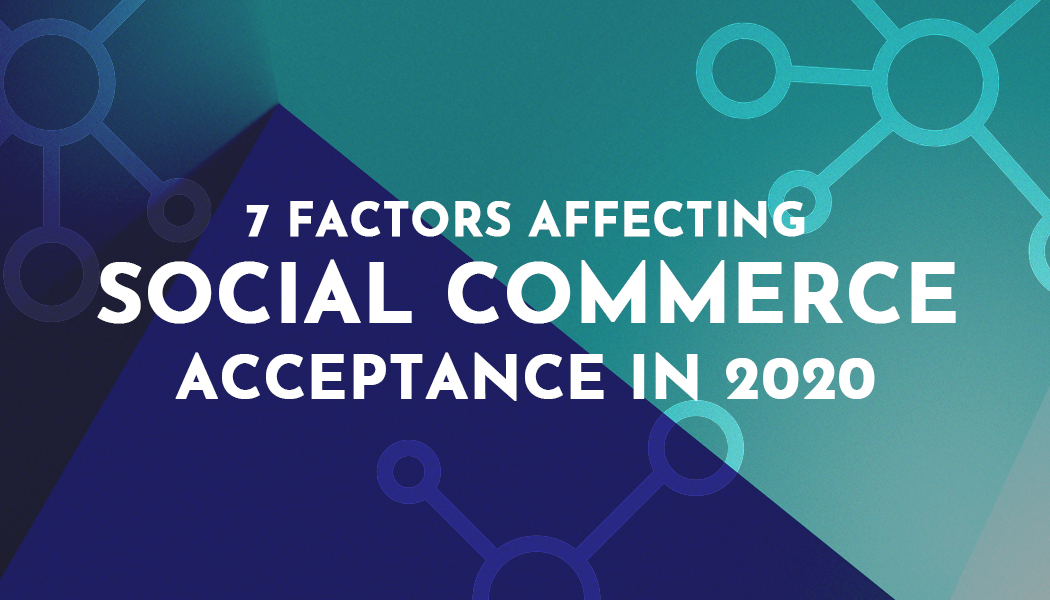7 Factors Affecting Social Commerce Acceptance in 2020
The term “social commerce” was coined by an American web services provider – Yahoo! in the year 2005. Since then, the eCommerce industry has been waiting for it to rise high. But unfortunately, for online shoppers and retailers, the growth of social commerce has been a bit slow.
However, with the starting of 2020, it is expected that there would be an increase in the acceptance of social commerce, and accordingly, businesses should prepare themselves for change. In this article, we will be explaining what exactly is social commerce along with the factors that would affect its acceptance in 2020.
What is Social Commerce?
Social commerce can be understood as the process in which businesses sell their products or services with the help of networking sites such as Facebook, Twitter, Pinterest, Instagram, etc. Social commerce is different from social media marketing as the purchases take place in-platform, rather than being directed to an off-platform landing page or website. If the traffic comes to the web pages through social media, they are called social referrals.
With time, social networks are developing to provide online businesses with different features so that they can drive sales using these platforms. This process can already be seen happening in the popular social media platforms, for example, Facebook’s Messenger Checkout and Instagram’s Shoppable Posts.
Factors Affecting Social Commerce Acceptance
The acceptance of social commerce in 2020 is affected by several factors. Some of these factors are as follows:
1. Type of Ad and its Design with Mobile
A study by Hootsuite states that although one can have many advertising options when it comes to social media, the performance of ads depends on the ad platform and its type. The reason behind this is that every kind of ad addresses different objectives for different audiences. For example, advertisements such as video, photo, collection, carousel, etc. on Facebook are all used differently.
Additionally, the ads should also be designed to be responsive to mobiles. This is because a large percentage of the target audience prefers using their mobile phones over desktops for their daily browsing activities.
2. Use of Key Messages
Using key messages helps in generating interest in the audience. Thus, it needs to be the basis of the overall marketing strategy. It also helps in concisely promoting the business. While organizing the content calendar, the messages should be conveyed through all the posts for guaranteeing a constant brand image. Tailoring the audience to familiarise them with how they can benefit from a social commerce post is another way to boost acceptance. Sharing some exclusive offers through social posts can be one of the incentives for customers to encourage them to purchase.
3. Alignment of Business Goals to Enable Social Commerce
For promoting the acceptance of social commerce, it is imperative to link the goals of social commerce with the overall business goals. Accordingly, the people, technology, and processes should be aligned, clearly defining the social media responsibilities of each. The businesses that can encourage alignment between different groups in social commerce would be far better positioned for actively engaging their customers and driving positive results.
4. Visibility in News Feed
A business needs to find out and implement different ways to capture the attention of their target audience in social feeds. The use of themes such as puzzles, humor, etc. and creative methods can be some great ingredients for acceptance and success of social commerce. It is also a good idea to research the competitors as it will provide information about how the audience reacts to different techniques. This way, a business can develop an effective plan to make the business stand out from the others. It will also encourage customers to interact with your business, increasing exposure.
5. Keep a Check on Metrics
While applying different techniques for boosting social commerce, it is essential to keep an eye on the metrics to keep a check on the acceptance. Identifying the posts that go well with your audience is a good step in this direction. This will help in finding out patterns that give a positive result for the acceptance of social commerce. Different scheduling times, as well as specific audience targeting, play a significant role in this regard.
6. Genuine Connection with Users
One of the major benefits of social commerce is that one can make deep connections with the users. The customers can also be engaged with the help of polls or surveys. By understanding what they want to purchase, a business can make a better choice when it comes to product development and manage the inventory for the most popular products.
Brands also need to encourage recommendations from existing customers. This is because many people turn to social media to check out the reviews of a product before purchasing it. According to a study by All Facebook, around 75% of the audience is likely to purchase a product recommended by a friend over brand recommendations. One can check out the recommendations of a page in the Facebook Insights tab. This gives an idea of the number of times a page has been included in a Facebook reply.
7. Existence of Good Social Commerce Experience
To boost social commerce acceptance, it is crucial to create a pleasant and seamless social commerce experience. A business needs to develop an experience that is easy and can be done in a single or a few clicks. In an eCommerce environment, future capabilities might allow the user to experience complete online shopping on social media platforms.
Conclusion
Although social commerce might have a slow start; however, the growth of social media suggests that 2020 would be a great year for its growth. A business should be prepared to meet up with these upcoming trends and change accordingly. The above seven social commerce factors are essential to be considered to boost acceptance in this digital era.




